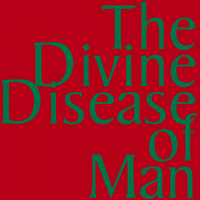Mark Raidpere’s exhibition at the Vaal Gallery
A glamour, fashion and trend photographer has fallen seriously ill. By the name of Mark Raidpere. Looked at from whatever angle, whether clinical or artistic, it remains a serious case.
At the time when the young radicals’ idol band is the sickly-sweet ‘Cardigans’ and the very young world conquerors consider childish babbling a bold opposition to sober society, Raidpere switches off the colourful footlights, flings off his stretch clothes, even hurls into a corner the hot camera, sends the Fuji colour solution to hell and produces a series of black-and-white pictures of himself, the negatives of which are covered with water stains, scratches, dust, hairs and other amateur-like marks.
Also the optics seem somewhat the worse for wear, the image is blurred at the edges, but this might well be just wishful thinking by the present writer. Because it is well known that the poorer the technique, the more natural seems the result. The more amateur the method, the more sincere are the intentions felt to be. Raidpere, the decadent photographer, is clever enough to make good use of that.
And even when being fully aware that this change is no more than sober consideration of art policy, we still have to admit that Raidpere’s current exhibition in the Vaal Gallery has more weight than all his previous exhibitions put together.
Nevertheless, things are far from any norm or other. In all the nude pictures, hands are essential. There are stigmas on the hands. Stigmas can be seen on almost every photograph. Painful signs of real physical suffering, of sadomasochist auto-da-fé which, upon the order of the spirit, sacrifices all flesh if it fails to obey the order.
Suffering, therefore, exists, has existed, we must acknowledge it post factum and we must eat our words about the considerations of art policy. Raidpere has presented his body’s sufferings with exhibitionist flourish and has, together with the viewers, set about to gaze at and touch. A highly democratic gesture, but the game is played by the artist’s rules.
Raidpere has been fascinated with generic identity, the sliding from one sexual polarity into another, but as we know, this fascination was previously directed into glamorous productions about transvestites.
Now the discoveries are more of anatomical nature. Genitals, buttocks, hip curves and naturally the eyes and face – the most deceptive places in the human body – everything is being embraced by wounded hands. At times the hideously scarred hands stretch the mouth into a wide keep-smiling position, only to drag the crow’s feet from around the eyes backwards towards the ears the next moment – a little plastic operation.
Raidpere makes faces and some of these are feminine, as are some postures he has taken. Quite a few such postures could be sexy in a woman, but the unconcealed masculinity of Raidpere’s body expresses a kind of schizophrenic split-up and a desire for hermaphroditic self-satisfaction. This urge is obviously deeply psychological, but weak flesh suffices to illustrate it; flesh that never quite makes it to the end.
I see no reason why a direct parallel could not be drawn here with the Viennese actionists, especially Rudolf Shwartzkogler, who in 1970 and even earlier organised in Austria grand performances of self-photographing, seemingly in bloody bandages and outpouring intestines.
Still, Raidpere is more real, he is as real as Chris Burden who in the 1970s had himself crucified in Los Angeles on the roof of a small Volkswagen. For real. With nails. For some time. This is the same man who had himself shot at with a pistol during a performance. He almost died.
Suffering is utterly real. Just like in Bob Flannagan and Frida Kahlo’s work and life, just like … etc.etc.
Raidpere is not the first to turn his sufferings into art, and he is certainly not going to be the last. I do not know whether he gains something from it all. But contemporary art, that old weary whore, receives a new vitamin injection, and allows a young man’s martyrdom to pass through her worldly-wise legs.
Thus the key of the set of pictures is to be found in a few more restrained portraits where nothing much seems to happen at all. Raidpere merely lets his huge calf’s eyes sparkle in the depths of a picture, and in another he crumples into an embryonic position on a stool. Not a trace of the ‘here and now’, no show, only oblivion – the end of suffering.
Back to the pre-body life, back to Eden where there are no generic choices, back to the womb where there is no weight of your own body. And the man said: let there be darkness…

